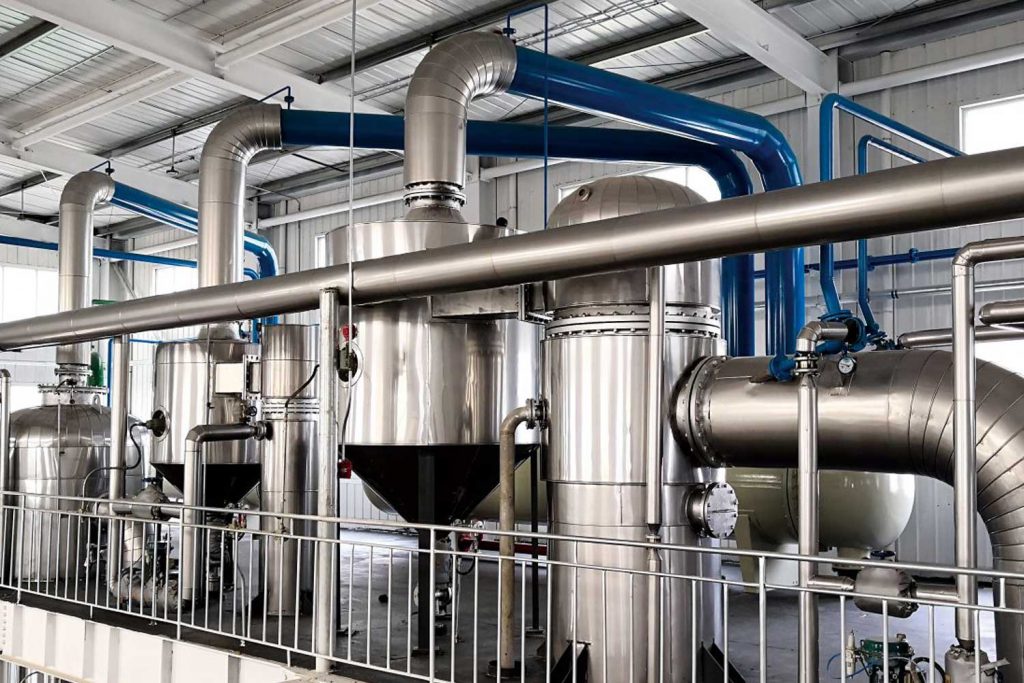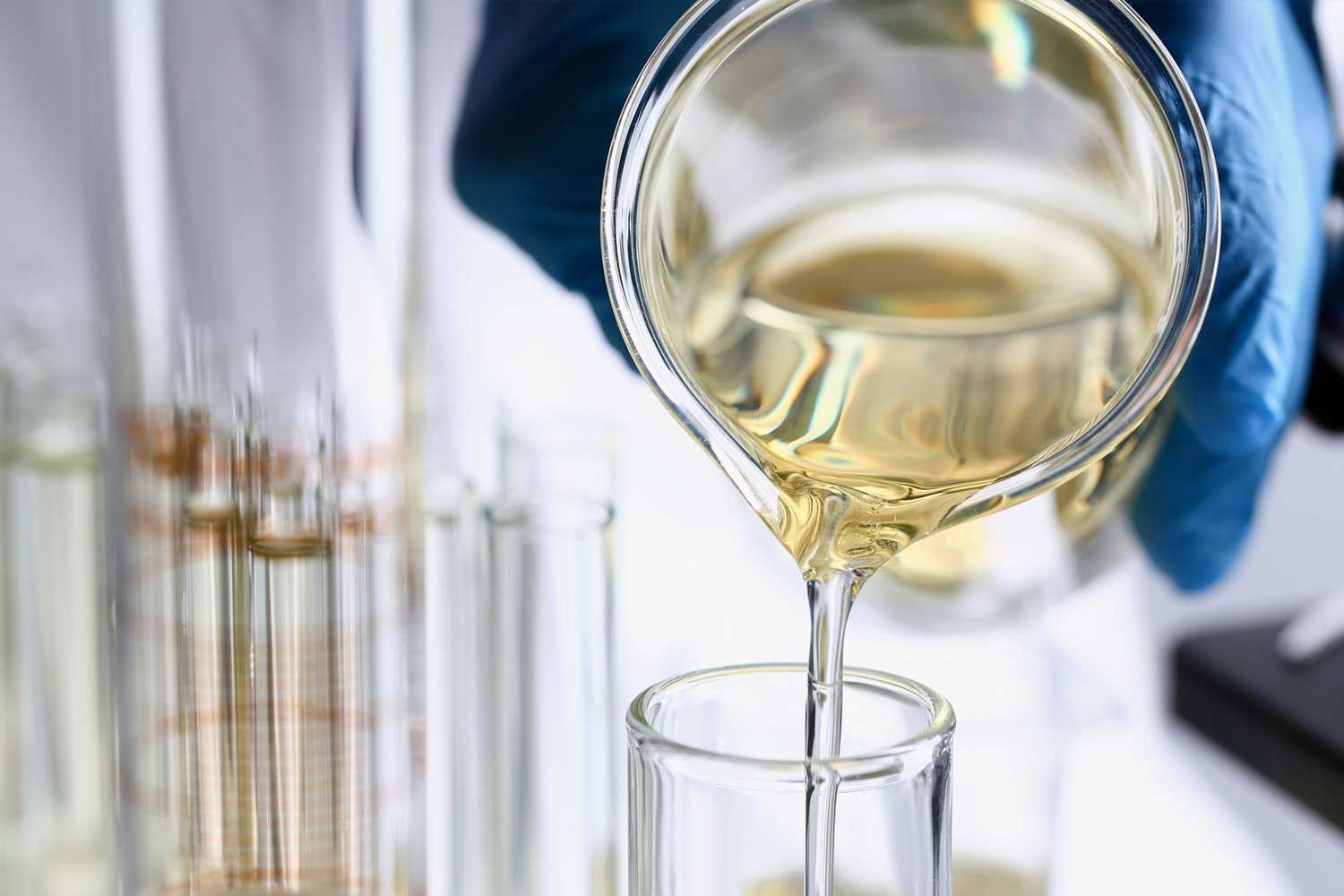Solvents commonly used in the extraction of plants are polar solvent (e.g., water, alcohols), intermediate polar (e.g., acetone, dichloromethane), and nonpolar (e.g., n-hexane, ether, chloroform).
Conditions for Ideal Extraction Solvents

What kind of properties are required for an extraction solvent?
- Immiscibility.
- Dissolves the compound to be extracted.
- Does not dissolve impurities.
- Volatile.
- Not toxic, not flammable.
Immiscible pair of solvents: water and low polarity organic solvents
The extracting solvent must be immiscible with the solution to be extracted.
Immiscible pair of solvents: water and low polarity organic solvents, the extracting solvent must be immiscible with the solution to be extracted.
- Water or a water-based solution is usually one of the pair.
- The other solvent is an organic solvent.
What organic solvents are immiscible with water?
- The more polar the organic solvent, the more it is miscible (soluble) with water. For example, polar solvents such as methanol, ethanol, and acetone are miscible with water, thus not suitable for liquid-liquid extraction.
- Organic solvents with low polarity such as hexanes, toluene, dichloromethane, and diethyl ether are usually chosen as the organic extracting solvent.
Good solubility of the target compound
The compound(s) to be extracted, which are present in a solution, should also be soluble in the extracting solvent.
Poor solubility of impurities
Major impurities (e.g., from a reaction) should not be soluble in the extracting solvent.
The volatility of the extraction solvent
The extracting solvent should be sufficiently volatile so that it can be removed easily from the extracted material by distillation.
Toxicity and safety properties of the extraction solvent
It is usually desirable if the solvent is non-toxic and not flammable.
Few solvents are known to meet both criteria:
- Some solvents are not toxic but flammable (e.g., diethyl ether, hydrocarbons–petroleum ether, hexanes).
- Some are not flammable but toxic (e.g., dichloromethane, chloroform).
- Some solvents are both toxic and flammable (e.g., benzene).
Factors should be considered when selecting a solvent
Polarity
- Boiling temperature – this should be low in order to facilitate the Removal of the solvent from the product;
- Reactivity – the solvent should not react chemically with the Extract, nor should it readily decompose;
- Viscosity – must be low;
- Stability to heat, oxygen, and light;
- Coast and safety
More commonly used organic solvents
- Aliphatic hydrocarbons: propane, butane, hexane
- Alcohols: methanol, ethanol, 2-propanol
- Hydrocarbons with a carbonyl group: acetone, methyl acetate
- Halogen derivation: dichloromethane, dichloroethane, freons.
Common solvents for extraction
Water
Water as a solvent is economical and easy to obtain has a large polarity and a wide range of solubility.
Its disadvantages are poor selectivity, easy to extract a large number of ineffective ingredients, which brings difficulties to the purification of preparations; the poor color of preparations, prone to mildew, and difficult to store; may cause the hydrolysis of certain active ingredients, or promote certain chemical changes.
Ethanol
Ethanol is a semi-polar solvent, and its solubility is between polar and non-polar solvents.
Ethanol extraction process
It can dissolve some water-soluble components, such as alkaloids and their salts, glycosides, small molecular sugars, bitterness, etc.; it can also dissolve some components dissolved by non-polar solvents, such as resins, volatile oils, lactones, Aromatic compounds, etc., a small amount of fat can also be dissolved by ethanol.
Ethanol can be miscible with water in any ratio. In actual production, ethanol solutions of different concentrations are often used to selectively extract the active ingredients of medicinal materials.
Generally, when the ethanol content is above 90%, it is suitable for extracting volatile oil, organic acids, resins, chlorophyll, etc.; when the ethanol content is 50%-70%, it is suitable for extracting alkaloids, glycosides, etc.; the ethanol content is below 50% It is suitable for extracting bitter substances, anthracene compounds, etc.
When the ethanol content is greater than 40%, it can delay the hydrolysis of many extracts (such as esters, glycosides, etc.) and increase the stability of the preparation. It has an antiseptic effect when the ethanol content is more than 20%.
What should be paid attention to in ethanol extraction?
The specific heat capacity of ethanol is small, the boiling point is 78.2℃, and the latent heat of vaporization is smaller than that of water. Therefore, the process of evaporation and concentration consumes less heat than water. However, ethanol is volatile and flammable, and safety protection should be paid attention to during production.
In addition, ethanol also has a certain pharmacological effect and is more expensive. Therefore, the concentration of ethanol when used is to be able to extract the active ingredients and stabilize the preparation.
Chloroform
Chloroform is a non-polar solvent, slightly soluble in water, and can be arbitrarily miscible with ethanol and ether.
Chloroform can dissolve alkaloids, glycosides, volatile oils, resins, etc., but cannot dissolve proteins, tannins, etc. Chloroform has an antiseptic effect, and its saturated aqueous solution is often used as a leaching solvent. Although chloroform is not easy to burn, it has a strong pharmacological effect, so it should be removed as much as possible in the leaching solution. Its price is more expensive, and one strand is only used to purify and refine the active ingredients.
Acetone
Acetone is a good degreasing solvent.
Since acetone is miscible with water, it is also a dehydrating agent. It is often used for degreasing or dehydrating fresh animal medicinal materials.
Acetone also has a preservative effect, with a boiling point of 56.5°C, is volatile, flammable, and has a certain degree of toxicity, so it should not be retained as a solvent in the preparation.
Ether
Diethyl ether is a non-polar organic solvent, slightly soluble in water (1:12), and can be arbitrarily miscible with ethanol and other organic solvents.
Ether has strong dissolution selectivity and can dissolve resins, free alkaloids, fats, volatile oils, and certain glycosides. Most of the active ingredients dissolved in water are insoluble in ether. Diethyl ether has a strong pharmacological effect. It has a boiling point of 34.5°C, is extremely easy to burn, and expensive, and is generally only used for the purification of active ingredients.
Hexane
Hexane is a popular solvent for extraction as it has a very low VOC, is safe to be used with goods produced for consumption, and it produces no foul odor or poisonous fumes. All of this coupled with hexane’s low boiling point, it is considered a safe, fast, easy-to-use solvent for extraction.
Isopropyl Alcohol
IPA is also a low VOC solvent, making it ideal for extraction. IPA is also less flammable when compared to similar solvents used for extraction and in concentrations of 95% or higher, yields more oil than other, weaker solvents.
Auxiliary for solvent extraction
Sour
The purpose of adding acid in the extraction solvent is mainly to promote the leaching of alkaloids and improve the stability of some raw materials; to free the organic acid, facilitate the extraction with organic solvents, and remove acid-insoluble impurities, etc.
Alkali
The application of alkali is not as common as acid. The purpose of adding alkali is to increase the solubility and stability of the active ingredients. For example, adding a little ammonia to the water when extracting licorice can make glycyrrhizic acid form a soluble ammonium salt and ensure the complete leaching of glycyrrhizic acid. In addition, the alkaline aqueous solution can dissolve lactones, anthraquinones, coumarins, organic acids, and certain phenolic components. However, the alkaline aqueous solution can also dissolve resin acids and certain proteins, increasing impurities.
Glycerin
Glycerin can be arbitrarily miscible with water and alcohol, but immiscible with oils. This product is a good solvent for tannins. Adding it directly to the initial small amount of solvent (water or ethanol) can increase the leaching of tannins; adding glycerin to preparations with tannins as the main component can enhance tannins’ stability.
Surfactant
Adding a suitable surfactant to the extraction solvent can reduce the interfacial tension between the raw material and the solvent, reduce the wetting angle, promote surface wettability, and facilitate the extraction of certain components. For example, to extract baicalin by boiling alcohol precipitation method, adding Tween-80 can increase its yield.

